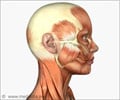Researchers have developed a new technique in which DNA patches are used to treat dogs with the canine version of Duchenne muscular dystrophy, a paralysing and often fatal disease of muscles.
Duchenne muscular dystrophy - a paralysing and often fatal disease of muscles - has been treated in canines by a new technique using DNA patches that researchers had developed.
Called "exon skipping", the technique uses tailor-made snippets of DNA-like molecules as molecular "patches", which cover up mutant DNA sequences that code for making an important muscle protein.The mutant sequences occur in portions of the gene known as exons, which contain the information needed to make the muscle protein.
By covering up the mutant regions, the DNA patches allowed the dogs to make an imperfect-but functional-version of the protein, and significantly improve their muscle functioning.
The researchers say that their findings have shown that the DNA patches could be delivered by injection throughout the entire body in a much larger animal than a mouse, raising the possibility that they might be successfully delivered into the human body as well.
The current study also represents an advance over the earlier efforts in that it was able to use several different kinds of DNA patches.
A combination of different patches, known as a cocktail, would be needed to treat most of the human cases of the disease, which can involve many different exons.
Advertisement
"This is a promising finding. It's an important step toward realizing the goal of developing a treatment that could alleviate the symptoms of this disorder," said Dr. Duane Alexander, director of the Eunice Kennedy Shriver National Institute of Child Health and Human Development (NICHD).
Advertisement
Source-ANI
TAN/L














